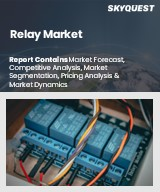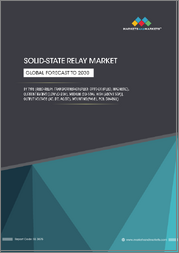
|
시장보고서
상품코드
1702020
인쇄회로기판(PCB) 시장 : 유형별, 기판별, 최종 이용 산업별, 지역별(2025-2033년)Printed Circuit Board Market Report by Type, Substrate, End Use Industry, and Region 2025-2033 |
||||||
인쇄회로기판(PCB) 세계 시장 규모는 2024년 731억 달러에 달했습니다. 향후 IMARC Group은 2033년에는 977억 달러에 달하고, 2025-2033년 연평균 성장률(CAGR)은 3.30%를 보일 것으로 전망하고 있습니다. 소비자 전자기기 수요 증가, 자동차 기술 발전, 사물인터넷(IoT) 분야 확대, 전자 부품 소형화, 기술 혁신과 지속가능성을 촉진하는 엄격한 환경 규제가 인쇄회로기판(PCB) 수요를 강화하고 있습니다.
인쇄회로기판(PCB)은 전도성 경로, 트랙 또는 신호 트레이스를 사용하여 전자 부품을 기계적으로 지지하고 전기적으로 연결하는 전기 회로입니다. 에폭시, 유리 섬유 및 기타 복합재료로 구성되어 전체 회로 설계의 복잡성을 최소화하는 데 도움을 주며, PCB는 컴퓨팅 시스템의 전력, 성능, 신뢰성 및 보안을 향상시키는 데 매우 중요한 역할을 합니다. 그 결과, PCB는 전 세계 의료, 항공우주, 전자, 국방, IT 및 통신 산업에서 광범위하게 사용되고 있습니다.
인쇄회로기판(PCB) 시장 동향 :
PCB는 자동차의 헤드업 디스플레이(HUD), 첨단운전자보조시스템(ADAS) 제어 모듈, 안티락 브레이크 시스템에 사용되고 있습니다. 이는 자동차 부문의 급속한 확장과 함께 시장 전망을 밝게 하는 중요한 요소 중 하나가 되었습니다. 또한, 연료 조절기, 전원 공급 장치 및 엔진 관리 시스템은 PCB 기반 전자 장치를 사용하여 리소스를 모니터링하고 관리합니다. 또한, LED의 성능 향상과 손상 방지에도 도움이 됩니다. 이와 함께 로봇 공학, 인공지능(AI), 사물인터넷(IoT)의 통합이 진행되어 전체 매출과 수익성을 높이고 있습니다. 또한 PCB는 계산기, 항공우주 부품, 의료기기, 원격 제어 장치, 회로 기판, 산업기계, 상업용 기계 및 컴퓨터, 통신, 제어, 가정용 엔터테인먼트 장비의 제조에 활용되고 있습니다. 이와는 별도로 반도체 산업의 소형화 추세는 전 세계적으로 PCB 수요를 자극하고 있습니다. 또한 제품 혁신, 기술 발전, 전 세계 전자 폐기물 증가로 인한 친환경 PCB에 대한 요구 증가는 시장 성장을 가속하는 다른 요인 중 일부입니다.
본 보고서에서 다룬 주요 질문
- 2024년 세계 인쇄회로기판(PCB) 시장 규모는?
- 2025-2033년 세계 인쇄회로기판(PCB) 시장의 예상 성장률은?
- 코로나19가 세계 인쇄회로기판(PCB) 시장에 미치는 영향은?
- 세계 인쇄회로기판(PCB) 시장을 이끄는 주요 요인은?
- 세계 인쇄회로기판(PCB) 시장의 유형별 세계 시장 점유율은?
- 세계 인쇄회로기판(PCB) 시장의 기판별 분류는?
- 세계 인쇄회로기판(PCB) 시장의 주요 지역은?
- 세계 인쇄회로기판(PCB) 시장의 주요 기업은?
목차
제1장 서문
제2장 조사 범위와 조사 방법
- 조사 목적
- 이해관계자
- 데이터 소스
- 1차 정보
- 2차 정보
- 시장 추정
- 보텀업 접근
- 톱다운 접근
- 조사 방법
제3장 주요 요약
제4장 서론
- 개요
- 주요 업계 동향
제5장 세계의 인쇄회로기판(PCB) 시장
- 시장 개요
- 시장 실적
- COVID-19의 영향
- 시장 예측
제6장 시장 분석 : 유형별
- 단면
- 양면
- 다층
- HDI
제7장 시장 분석 : 기판별
- Rigid
- Flexible
- Rigid-Flex
제8장 시장 분석 : 최종 이용 산업별
- 산업용 일렉트로닉스
- 헬스케어
- 항공우주 및 방위
- 자동차
- IT 및 통신
- 소비자 일렉트로닉스
- 기타
제9장 시장 분석 : 지역별
- 북미
- 미국
- 캐나다
- 아시아태평양
- 중국
- 일본
- 인도
- 한국
- 호주
- 인도네시아
- 기타
- 유럽
- 독일
- 프랑스
- 영국
- 이탈리아
- 스페인
- 러시아
- 기타
- 라틴아메리카
- 브라질
- 멕시코
- 기타
- 중동 및 아프리카
- 시장 내역 : 국가별
제10장 SWOT 분석
- 개요
- 강점
- 약점
- 기회
- 위협
제11장 밸류체인 분석
제12장 Porter의 Five Forces 분석
- 개요
- 바이어의 교섭력
- 공급 기업의 교섭력
- 경쟁 정도
- 신규 진출업체의 위협
- 대체품의 위협
제13장 가격 분석
제14장 경쟁 구도
- 시장 구조
- 주요 기업
- 주요 기업 개요
- Advanced Circuits Inc.
- AT & S Austria Technologie & Systemtechnik Aktiengesellschaft
- Becker & Muller Circuit Printing GmbH
- Jabil Inc.
- Murrietta Circuits
- Nippon Mektron Ltd.(NOK Corporation)
- Sumitomo Corporation
- TTM Technologies Inc.
- Unimicron Technology Corporation(United Microelectronics Corporation)
- Wurth Elektronik GmbH & Co. KG(Wurth Group)
- Zhen Ding Technology Holding Limited
The global printed circuit board market size reached USD 73.1 Billion in 2024. Looking forward, IMARC Group expects the market to reach USD 97.7 Billion by 2033, exhibiting a growth rate (CAGR) of 3.30% during 2025-2033. The increasing demand for consumer electronics, advancements in automotive technology, expansion of the Internet of Things (IoT) sector, and the rise in electronic component miniaturization, coupled with stringent environmental regulations fostering innovation and sustainability, are strengthening the printed circuit board demand.
A printed circuit board (PCB) is an electrical circuit that mechanically supports and electrically connects electronic components using conductive pathways, tracks, or signal traces. It is composed of epoxy, fiberglass, and other composite materials that help minimize the complexity of the overall circuit design. It plays a pivotal role in improving the power, performance, reliability, and security of a computing system. As a result, PCB finds extensive applications in the healthcare, aerospace, electronics, defense, information technology (IT), and telecommunications industries around the world.
Printed Circuit Board Market Trends:
PCBs are used in head-up display (HUD), advanced driver assistance systems (ADAS) control modules and antilock brake systems of automobiles. This, coupled with the rapid expansion of the automotive sector, represents one of the key factors creating a positive outlook for the market. In addition, fuel regulators, power supplies, and engine management systems use PCB-based electronics to monitor and manage resources. They also help enhance the performance of light-emitting diodes (LEDs) and prevent them from damage. Along with this, the growing integration of robotics, artificial intelligence (AI), and the internet of things (IoT) is augmenting the overall sales and profitability. Moreover, PCBs are utilized in the manufacturing of calculators, aerospace components, medical devices, remote control units, circuit boards, industrial machinery, business machines and computers, and communication, control, and home entertainment equipment. Apart from this, the increasing trend of miniaturization in the semiconductor industry is catalyzing the demand for PCBs across the globe. Furthermore, product innovations, technological advancements, and the rising requirement of eco-friendly PCBs on account of the increasing electronic waste worldwide are some of the other factors stimulating the market growth.
Key Market Segmentation:
Breakup by Type:
- Single-Sided
- Double-Sided
- Multi-Layer
- HDI
Breakup by Substrate:
- Rigid
- Flexible
- Rigid-Flex
Breakup by End Use Industry:
- Industrial Electronics
- Healthcare
- Aerospace and Defense
- Automotive
- IT and Telecom
- Consumer Electronics
- Others
Breakup by Region:
- North America
- United States
- Canada
- Asia-Pacific
- China
- Japan
- India
- South Korea
- Australia
- Indonesia
- Others
- Europe
- Germany
- France
- United Kingdom
- Italy
- Spain
- Russia
- Others
- Latin America
- Brazil
- Mexico
- Others
- Middle East and Africa
Competitive Landscape:
The competitive landscape of the industry has also been examined along with the profiles of the key players being Advanced Circuits Inc., AT & S Austria Technologie & Systemtechnik Aktiengesellschaft, Becker & Muller Circuit Printing GmbH, Jabil Inc., Murrietta Circuits, Nippon Mektron Ltd. (NOK Corporation), Sumitomo Corporation, TTM Technologies Inc., Unimicron Technology Corporation (United Microelectronics Corporation), Wurth Elektronik GmbH & Co. KG (Wurth Group) and Zhen Ding Technology Holding Limited.
Key Questions Answered in This Report
- 1.What was the size of the global printed circuit board market in 2024?
- 2.What is the expected growth rate of the global printed circuit board market during 2025-2033?
- 3.What has been the impact of COVID-19 on the global printed circuit board market?
- 4.What are the key factors driving the global printed circuit board market?
- 5.What is the breakup of the global printed circuit board market based on the type?
- 6.What is the breakup of the global printed circuit board market based on the substrate?
- 7.What are the key regions in the global printed circuit board market?
- 8.Who are the key players/companies in the global printed circuit board market?
Table of Contents
1 Preface
2 Scope and Methodology
- 2.1 Objectives of the Study
- 2.2 Stakeholders
- 2.3 Data Sources
- 2.3.1 Primary Sources
- 2.3.2 Secondary Sources
- 2.4 Market Estimation
- 2.4.1 Bottom-Up Approach
- 2.4.2 Top-Down Approach
- 2.5 Forecasting Methodology
3 Executive Summary
4 Introduction
- 4.1 Overview
- 4.2 Key Industry Trends
5 Global Printed Circuit Board Market
- 5.1 Market Overview
- 5.2 Market Performance
- 5.3 Impact of COVID-19
- 5.4 Market Forecast
6 Market Breakup by Type
- 6.1 Single-Sided
- 6.1.1 Market Trends
- 6.1.2 Market Forecast
- 6.2 Double-Sided
- 6.2.1 Market Trends
- 6.2.2 Market Forecast
- 6.3 Multi-Layer
- 6.3.1 Market Trends
- 6.3.2 Market Forecast
- 6.4 HDI
- 6.4.1 Market Trends
- 6.4.2 Market Forecast
7 Market Breakup by Substrate
- 7.1 Rigid
- 7.1.1 Market Trends
- 7.1.2 Market Forecast
- 7.2 Flexible
- 7.2.1 Market Trends
- 7.2.2 Market Forecast
- 7.3 Rigid-Flex
- 7.3.1 Market Trends
- 7.3.2 Market Forecast
8 Market Breakup by End Use Industry
- 8.1 Industrial Electronics
- 8.1.1 Market Trends
- 8.1.2 Market Forecast
- 8.2 Healthcare
- 8.2.1 Market Trends
- 8.2.2 Market Forecast
- 8.3 Aerospace and Defense
- 8.3.1 Market Trends
- 8.3.2 Market Forecast
- 8.4 Automotive
- 8.4.1 Market Trends
- 8.4.2 Market Forecast
- 8.5 IT and Telecom
- 8.5.1 Market Trends
- 8.5.2 Market Forecast
- 8.6 Consumer Electronics
- 8.6.1 Market Trends
- 8.6.2 Market Forecast
- 8.7 Others
- 8.7.1 Market Trends
- 8.7.2 Market Forecast
9 Market Breakup by Region
- 9.1 North America
- 9.1.1 United States
- 9.1.1.1 Market Trends
- 9.1.1.2 Market Forecast
- 9.1.2 Canada
- 9.1.2.1 Market Trends
- 9.1.2.2 Market Forecast
- 9.1.1 United States
- 9.2 Asia-Pacific
- 9.2.1 China
- 9.2.1.1 Market Trends
- 9.2.1.2 Market Forecast
- 9.2.2 Japan
- 9.2.2.1 Market Trends
- 9.2.2.2 Market Forecast
- 9.2.3 India
- 9.2.3.1 Market Trends
- 9.2.3.2 Market Forecast
- 9.2.4 South Korea
- 9.2.4.1 Market Trends
- 9.2.4.2 Market Forecast
- 9.2.5 Australia
- 9.2.5.1 Market Trends
- 9.2.5.2 Market Forecast
- 9.2.6 Indonesia
- 9.2.6.1 Market Trends
- 9.2.6.2 Market Forecast
- 9.2.7 Others
- 9.2.7.1 Market Trends
- 9.2.7.2 Market Forecast
- 9.2.1 China
- 9.3 Europe
- 9.3.1 Germany
- 9.3.1.1 Market Trends
- 9.3.1.2 Market Forecast
- 9.3.2 France
- 9.3.2.1 Market Trends
- 9.3.2.2 Market Forecast
- 9.3.3 United Kingdom
- 9.3.3.1 Market Trends
- 9.3.3.2 Market Forecast
- 9.3.4 Italy
- 9.3.4.1 Market Trends
- 9.3.4.2 Market Forecast
- 9.3.5 Spain
- 9.3.5.1 Market Trends
- 9.3.5.2 Market Forecast
- 9.3.6 Russia
- 9.3.6.1 Market Trends
- 9.3.6.2 Market Forecast
- 9.3.7 Others
- 9.3.7.1 Market Trends
- 9.3.7.2 Market Forecast
- 9.3.1 Germany
- 9.4 Latin America
- 9.4.1 Brazil
- 9.4.1.1 Market Trends
- 9.4.1.2 Market Forecast
- 9.4.2 Mexico
- 9.4.2.1 Market Trends
- 9.4.2.2 Market Forecast
- 9.4.3 Others
- 9.4.3.1 Market Trends
- 9.4.3.2 Market Forecast
- 9.4.1 Brazil
- 9.5 Middle East and Africa
- 9.5.1 Market Trends
- 9.5.2 Market Breakup by Country
- 9.5.3 Market Forecast
10 SWOT Analysis
- 10.1 Overview
- 10.2 Strengths
- 10.3 Weaknesses
- 10.4 Opportunities
- 10.5 Threats
11 Value Chain Analysis
12 Porters Five Forces Analysis
- 12.1 Overview
- 12.2 Bargaining Power of Buyers
- 12.3 Bargaining Power of Suppliers
- 12.4 Degree of Competition
- 12.5 Threat of New Entrants
- 12.6 Threat of Substitutes
13 Price Analysis
14 Competitive Landscape
- 14.1 Market Structure
- 14.2 Key Players
- 14.3 Profiles of Key Players
- 14.3.1 Advanced Circuits Inc.
- 14.3.1.1 Company Overview
- 14.3.1.2 Product Portfolio
- 14.3.2 AT & S Austria Technologie & Systemtechnik Aktiengesellschaft
- 14.3.2.1 Company Overview
- 14.3.2.2 Product Portfolio
- 14.3.2.3 Financials
- 14.3.3 Becker & Muller Circuit Printing GmbH
- 14.3.3.1 Company Overview
- 14.3.3.2 Product Portfolio
- 14.3.4 Jabil Inc.
- 14.3.4.1 Company Overview
- 14.3.4.2 Product Portfolio
- 14.3.4.3 Financials
- 14.3.4.4 SWOT Analysis
- 14.3.5 Murrietta Circuits
- 14.3.5.1 Company Overview
- 14.3.5.2 Product Portfolio
- 14.3.6 Nippon Mektron Ltd. (NOK Corporation)
- 14.3.6.1 Company Overview
- 14.3.6.2 Product Portfolio
- 14.3.7 Sumitomo Corporation
- 14.3.7.1 Company Overview
- 14.3.7.2 Product Portfolio
- 14.3.7.3 Financials
- 14.3.7.4 SWOT Analysis
- 14.3.8 TTM Technologies Inc.
- 14.3.8.1 Company Overview
- 14.3.8.2 Product Portfolio
- 14.3.8.3 Financials
- 14.3.8.4 SWOT Analysis
- 14.3.9 Unimicron Technology Corporation (United Microelectronics Corporation)
- 14.3.9.1 Company Overview
- 14.3.9.2 Product Portfolio
- 14.3.9.3 Financials
- 14.3.10 Wurth Elektronik GmbH & Co. KG (Wurth Group)
- 14.3.10.1 Company Overview
- 14.3.10.2 Product Portfolio
- 14.3.11 Zhen Ding Technology Holding Limited
- 14.3.11.1 Company Overview
- 14.3.11.2 Product Portfolio
- 14.3.11.3 Financials
- 14.3.1 Advanced Circuits Inc.



















